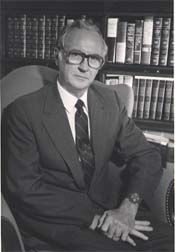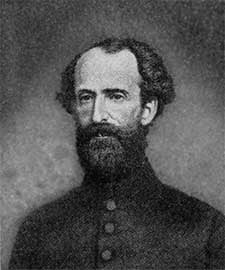Today’s post was written for the PCA Historical Center in 2006 by Dr. Barry Waughand is reproduced here, substantially edited for length.
 Three hundred years ago this year the first meeting of the General Presbytery was convened in Philadelphia. A specific date in 1706 cannot be pinpointed due to the loss of the first leaf of the minutes, but a letter of Rev. Francis Makemie provides the basis for assigning the year. The letter was written by Rev. Makemie from Philadelphia, to Benjamin Colman on March 28, 1707. After relating the story of his imprisonment with some other ministers for their preaching the Gospel as dissenting, non-Church of England ministers, he mentioned that he and six other ministers had met in Philadelphia earlier that month to consult regarding the best way to advance the Gospel.
Three hundred years ago this year the first meeting of the General Presbytery was convened in Philadelphia. A specific date in 1706 cannot be pinpointed due to the loss of the first leaf of the minutes, but a letter of Rev. Francis Makemie provides the basis for assigning the year. The letter was written by Rev. Makemie from Philadelphia, to Benjamin Colman on March 28, 1707. After relating the story of his imprisonment with some other ministers for their preaching the Gospel as dissenting, non-Church of England ministers, he mentioned that he and six other ministers had met in Philadelphia earlier that month to consult regarding the best way to advance the Gospel.
Pictured at right, a statue erected in memory of the Rev. Francis Makemie, located at Holden’s Creek, Accomack County, Virginia.
This meeting is the first convening of the General Presbytery with a complete set of minutes in the manuscript record book, and these minutes are preceded by a partial and brief section of minutes recorded in 1706. From this small and unfortunately imprecisely dated beginning, the Presbyterian Church grew to organize its first meeting of the General Synod in 1717, then its first General Assembly in 1789. During these years the Presbyterian Church formally adopted the Westminster Standards in 1729, and then saw a division between the Old and New Sides in 1744 that was reconciled with a reunion in 1758. The Presbyterian Church’s ministry increased through the years so that by the end of the eighteenth century it enjoyed a substantial flock distributed throughout the young nation for the purpose of glorifying and enjoying God.
The six oldest congregations in the Presbyterian Church in America can trace their ministries to the early years leading up to and following the first presbytery meeting. Each of these congregations was organized before the first General Assembly in 1789 and its associated publication of the first edition of the Constitution of the Presbyterian Church, which contained the Westminster Standards and associated church government documents. Through the colonial period and into the early years of America, the Presbyterian Church ministered through local congregations as America grew and prospered, and these six PCA churches can trace their ancestry directly to the foundational work of the Presbyterian Church in the eighteenth century.
1. The oldest organized church in the PCA is the Fairfield Presbyterian Church of New Jersey, which traces its beginning in New Jersey to 1680.
2. Manor Presbyterian Church, Cochranville, PA (org. 1730). The Rev. Samuel Blair was pastor here, briefly.
3. First Presbyterian Church, Waynesboro, GA (org. 1760). The earliest body associated with what became the Waynesboro Church was the Briar Creek Church, which petitioned the Synod of New York and Philadelphia for supply ministers. In 1770 the synod, through the Presbytery of New Castle, sent Josiah Lewis, Princeton class of 1766, to serve as a supply pastor for sixth months in Long Cane, South Carolina, and then for three additional months at Briar Creek. His few months at Briar Creek must have endeared him to the congregation because he continued serving both Briar Creek and an additional charge at Queensboro for a few years. At some point, the Briar Creek Church became known as Old Church and continued to use that name until it merged with the Walnut Branch Church and eventually became what is presently the First Presbyterian Church of Waynesboro.
4. First Presbyterian Church, Schenectady, NY (org. 1760). The Schenectady church initially worshipped in the building used by the Episcopalians until in 1769 eight Presbyterians purposed to build a wooden place of worship for themselves, which was not completed until after the arrival of the first minister, Rev. Alexander Miller, in 1771.
5. Goshen Presbyterian Church, Belmont, NC (org. 1764). Early oral history traces the Goshen Church’s beginnings to a stranger who died and was buried on the knoll that became the cemetery for the congregation. Near this cemetery, the congregation began to meet and eventually constructed a log worship building. Through the missionary work of Elihu Spencer, a Yale graduate, and Alexander McWhorter, a College of New Jersey man, Goshen and other churches were able to worship and receive pastoral care. In 1796, the Goshen congregation called its first minister, Humphrey Hunter, for a shared ministry with another local church.
6. Bethel Presbyterian Church, Clover, SC (org. 1764). As Goshen struggled in its early years, across the Carolina frontier in South Carolina, Bethel Presbyterian Church also struggled with the challenges and vicissitudes of frontier living. The Bethel Church heard the first sermon in its frontier home from William Richardson, a missionary of the Charleston Presbytery, and just as Rev. Humphrey Hunter had provided ministerial stability for the Goshen Church, so he ministered for a few years at Bethel in the beginning of the nineteenth century.
For Further Study:
Only eight letters written by Francis Makemie are known to have survived to the modern era. Five of these letters, including the one mentioned above, were reproduced in the appendix to American Presbyterianism, by Charles A. Briggs, available in digital format, here.


